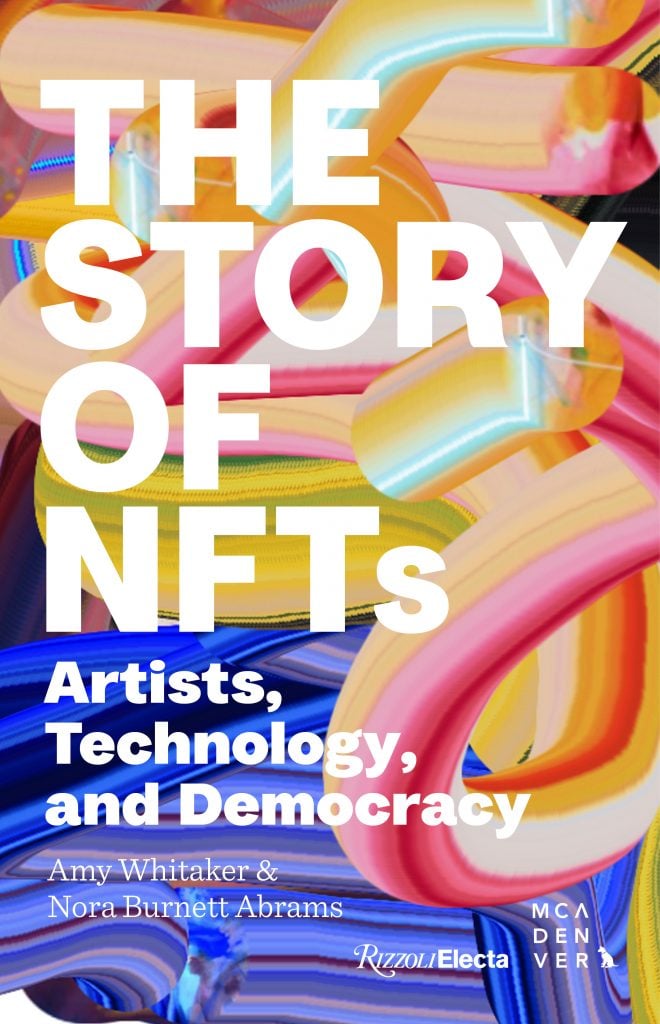“I think one of the biggest ideas I would come up with is really to try to use and leverage this technology to redistribute power – these interlocking systems, whether it’s museums, collectors, free ports, auction houses, etc. I also think one of the really beautiful things is how this technology builds community. It’s a beautiful thing. It can be forever.
— Cheryl Finley, professor, curator and writer
Beatriz Ramos was working as a commercial illustrator to create billion-dollar corporate brands when she and Judy Mam, a writer, began discussing a particular inequality in the art world: Artists created a creative value that they did not possess. Artists could put their portfolios online and “people would give you a like,” as Mam said, but at some point, as Ramos said, “If we want artists to be a community, we We have to give them the tools to do what they do best, which is to make art. Ramos and Mam envisioned a global collective of artists working together. The impetus to found their platform , DADA, was to nurture creativity and bring people together. To join the community, you had to respond to someone else’s drawing with a drawing of your own, to participate in a visual conversation with others.
DADA was founded in 2014, long before wider awareness of NFTs. Mam and Ramos designed this digital community as a space where artists could draw, create and connect with each other. To their surprise, they found that people loved the creative freedom of drawing with strangers around the world, without fear of being judged by close friends, but experimenting.
NFT’s first DADA collection, creepy and weird, evolved from multiple artists in multiple conversations and was curated by Ramos and Mam. When asked about the title, they replied that it was because, given the imaginative forms these visual conversations had spawned, “some were scary and some were weird”. The name was born out of Ramos and Mam’s desire to create a “cohesive collection to symbolize”. They were aware of Rare Pepes’ “weird and creepy aesthetic”, which led them to choose “this creepy and weird aesthetic” on purpose. They launched the project on Halloween 2017, which included secondary sales royalties for artists embedded in the smart contract, and have since reinvested funds raised from sales of their NFTs back into their community.
Later, DADA started another kind of conversation: a series of working groups on the “invisible economy”. They envisioned a future in which artistic creation could be radically separated from the marketplace and an underlying shared economy could benefit the entire community from the value created by its members. Ramos and Mam imagined that, although the works could be sold individually, a larger percentage of the sales proceeds would go into a fund that would be distributed to all active participants in the community, providing a form of universal basic income. Mam told us, “Although in the beginning individual artists received 70% of primary sales and 30% of secondary sales, today all profits from sales of DADA’s token collections go to a general fund where they will be distributed among all participating members. of the community, including technologists, according to their contributions. In other words, they’ve organized a collective version of the artists’ resale right, the percentage of a sale in the secondary market that goes to the artist, in the primary and secondary markets.
DADA’s pioneering work in adding automated royalties for artists also catalyzed a structural shift in how NFTs are handled: a group of artists led by Sparrow Read and Matt Kane were instrumental in establishing royalty standards for NFT platforms such as SuperRare and OpenSea.

The cover of The History of NFTs: Artists, Technology and Democracy. Photo courtesy of Rizzoli Electa.
The questions of DADA are at the heart of the political potential of blockchain: can it create new avenues of support for individual artists and, in fact, create forms of collective ownership, shared profits and surpluses that can be reinvested in artistic future? ? We find ourselves in a situation where the world is rapidly changing and we are inside the changing world. Therefore, the most critical thing to do is not answer the questions, but rather try to ask and engage with the right ones.
One of these key questions is how these new forms of economic sustainability can be realized through fractional shares and resale royalties. A second question is how collaboration and community practice is built around these systems of royalties and asset formation not only by artists but by other disengaged communities. Here, questions cannot be solved individually, but only by grouping together with others. This need for collective action can lead to huge shifts in the power structure and huge potential for community governance models.
These issues are at the center of blockchain democracy stories – issues of redistribution, participation, inequality and inclusion. While there are no clear answers to these questions yet, the importance of asking them has been the driving force behind our series. These questions are the subject of Whitaker’s research – and that of many other scholars and practitioners we were fortunate enough to invite. Our objective here, in the term – and the image of Abrams! , questions we could never answer alone, but which unite these intersecting blockchain histories and establish clear choices about how we choose to design the future.
Excerpted with permission from The History of NFTs: Artists, Technology and Democracy by Amy Whitaker and Nora Burnett Abrams, published by MCA Denver and Rizzoli Electa.
Follow Artnet News on Facebook:
Want to stay one step ahead of the art world? Subscribe to our newsletter to receive breaking news, revealing interviews and incisive reviews that move the conversation forward.
